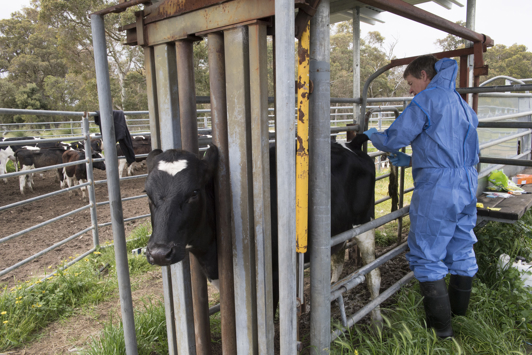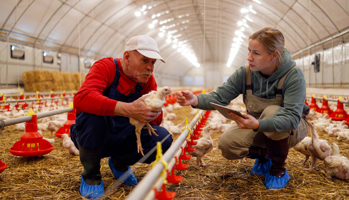Western Australia is free of most of the significant diseases that affect animals in other parts of the world. Ongoing surveillance is vital to ensure early detection of animal diseases that might impact on trade, regional or national animal health productivity, public health or the environment.
The National Significant Disease Investigation Program, administered by Animal Health Australia, contributes some funds to the WA's Significant Disease Investigation Program. See National Significant Disease Investigation Program for more information.
What is a significant disease?
Significant disease events can be defined as those clinically consistent with a reportable animal disease or a disease event in a severe outbreak form. A serious infectious disease of uncertain cause, which may be a new disease is also a significant disease event.
Diseases of significance to WA that must be reported are listed in the Reportable Animal Diseases Western Australia list and details of their legal status are listed on the Western Australian Organism list. See further information below.
Criteria for the program
Certain criteria must be met to be eligible for the Significant Disease Investigation Program in WA as outlined below.
For livestock cases to be eligible for the Significant Disease Investigation Program, they must:
- be cattle, sheep, goats or pigs
- have multiple animals affected
- be from a commercial herd/flock (at least 50 sheep or goats; or at least 20 pigs; or at least 10 cattle)
- include the following characteristics:
-
- an unusual disease incident, including high illness and death rates and/or rate of spread or
-
- visible signs consistent with a reportable disease without a clear alternative diagnosis or
-
- potential effect on trade, public health or the viability of a farm, industry or region.
Funded by Wildlife Health Australia through the National Significant Disease Investigation Program.
For wildlife cases to be considered for the program, they must be:
- An unusual disease incident, including high illness and death rates and/or rates of spread (high death rates defined as three or more animals of the same species).
- An incident where more than one animal is showing neurological symptoms.
- An incident in an endangered species.
- An incident where there is suspicion of a reportable animal disease.
Reporting animal diseases
Where there is high-level suspicion of a reportable disease, the department will lead the investigation. If you suspect a reportable animal disease or see signs of disease or death consistent with a reportable animal disease, you must report it.
Find out how to reportSubsidies for veterinarians
Livestock cases
The department provides the following subsidies for livestock cases that meet the above criteria:
- $462 (GST inclusive) to private veterinarians for an initial field investigation and submission of complete sample sets from postmortem or antemortem sampling.
- Fee exemption for laboratory diagnostic testing at DPIRD’s Diagnostic and Laboratory Services.
- $0.85 per kilometre for a maximum of 200 km.
Wildlife cases
Limited funding for wildlife disease investigations is available to non-government veterinarians through the National Significant Disease Investigation Program. This program provides funds for veterinary investigations as well as additional funds to cover laboratory testing.
There are no set subsidies or mileage allowances associated with this program. Veterinarians must submit a case report to the Western Australian Wildlife Health Australia Wildlife Health Coordinator as part of the funding.
Procedure for significant disease investigations
When a case consistent with the Significant Disease Investigation Program criteria occurs, the private veterinarian must contact their local field veterinary officer to seek approval to submit samples under the Significant Disease Investigation Program.
The department can only provide the subsidies when:
- A field veterinary officer authorised the investigation (phone or email authorisation).
- The private veterinarian has submitted the required forms to DPIRD Diagnostics and Laboratory Services, which include the Animal pathology diagnostic submission form and Agreement for submission of sample collection for significant disease investigation subsidy form, completed in full including the property identification code on the submission form.
- The private veterinarian has submitted a full or appropriate set of samples to DDLS.
In extenuating circumstances, where the private veterinarian was unable to gain authorisation from a department veterinarian before carrying out the investigation, they can contact their local field veterinary officer to assess whether retrospective approval may be granted.
Approval for wildlife case funding must be coordinated through the Wildlife Health Australia, Wildlife Health Coordinator for WA.
-
Find the list of reportable animal diseases in Western Australia and how to report if you see unusual disease signs in animals.View more about Reportable animal diseases
-
The WA Organism List (WAOL) provides the legal status of organisms that have been declared to be either permitted species or declared pests under the Biosecurity and Agriculture Management Act 2007 (BAM Act).View more about Western Australian Organism List



